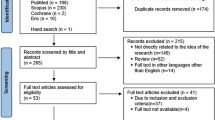Abstract
Aims To describe the use of blended learning as a method of undergraduate orthodontic teaching delivery and to assess its effectiveness in terms of knowledge gain.
Design Randomised controlled trial.
Setting Queen Mary University of London.
Materials and methods Seventy dental undergraduate students in their fifth year were randomly allocated to receive orthodontic seminar-based teaching either using a blended approach based on an e-learning resource or with no prior teaching. All students were asked to complete tests both before (T0) and after (T1) the study period.
Results The mean post-test score in the intervention group was 98.3% (a 19% improvement on baseline), while the mean score in the control group was 97.2% with intra-group improvements being statistically significant in both groups (P <0.001). However, no significant difference in terms of improvement in knowledge was found between the two groups (P = 0.36). In terms of satisfaction, 82% of the blended group and 74% in the control group rated the teaching as 'very good'.
Conclusions An undergraduate orthodontic-oral surgery e-learning adjunct to traditional teaching was successfully developed. Blending and traditional seminar teaching appear to be equally effective in terms of short-term knowledge gain, with high levels of learner satisfaction common to both approaches.
This is a preview of subscription content, access via your institution
Access options
Subscribe to this journal
Receive 24 print issues and online access
$259.00 per year
only $10.79 per issue
Buy this article
- Purchase on Springer Link
- Instant access to full article PDF
Prices may be subject to local taxes which are calculated during checkout

Similar content being viewed by others
References
Cantillon P, Wood D. Direct Observation Tools for Workplace-Based Assessment. In Cantillon P, Wood D (eds) ABC of Learning and Teaching in Medicine. pp 52-59. Chichester: Blackwell Publishing, 2010.
Jauhar P, Mossey P A, Popat H, Seehra J, Fleming P S. A survey of undergraduate orthodontic teaching and factors affecting pursuit of postgraduate training. Br Dent J 2016; 221: 487-492.
Cook D A, McDonald F S. E-learning: Is there anything special about the "E"? Perspect Biol Med 2008; 51: 5-21.
Bains M, Reynolds P A, McDonald F, Sherriff M. Effectiveness and acceptability of facetoface, blended and e-learning: a randomised trial of orthodontic undergraduates. Eur J Dent Educ 2011; 15: 110-117.
Mehta S, Clarke F, Fleming P S. An assessment of student experiences and learning based on a novel undergraduate e-learning resource. Br Dent J 2016; 221: 131-136.
El Tantawi M M, Abdelsalam M M, Mourady A M, Elrifae I M. eAssessment in a Limited-Resources Dental School Using an Open-Source Learning Management System. J Dent Educ 2015; 79: 571-583.
Linjawi A L, Hamdan A M, Perryer D G, Walmsley A D, Hill K B. Students' attitudes towards an on-line orthodontic learning resource. Eur J Dent Educ 2009; 13: 87-92.
General Dental Council. Preparing for practice: Dental team learning outcomes for registration. 2011. Available online at https://www.gdc-uk.org/education-cpd/quality-assurance/learning-outcomes-review-process (accessed February 2020).
Ludwig B, Bister D, Schott T C, Lisson J A, Hourfar J. Assessment of two e-learning methods teaching undergraduate students cephalometry in orthodontics. Eur J Dent Educ 2016; 20: 20-25.
Nurko C, Proffit W R. Acceptability and perceived effectiveness of web-based self-instruction in clinical orthodontics. Angle Orthod 2005; 75: 521-525.
Komolpis R, Johnson R A. Web-based orthodontic instruction and assessment. J Dent Educ 2002; 66: 650-658.
Turner P J, Weerakone S. An evaluation of the reproducibility of landmark identification using scanned cephalometric images. J Orthod 2001; 28: 221-230.
Office for National Statistics. Internet users, UK: 2018. 2018. Available at https://www.ons.gov.uk/businessindustryandtrade/itandinternetindustry/bulletins/internetusers/2018 (accessed February 2020).
Dias da Silva M A, Pereira A C, Walmsley A D. The availability of open access videos offered by dental schools. Eur J Dent Educ 2019; 23: 522-526.
de Peralta T L, Farrior O F, Flake N M, Gallagher D, Susin C, Valenza J. The Use of Social Media by Dental Students for Communication and Learning: Two Viewpoints: Viewpoint 1: Social Media Use Can Benefit Dental Students' Communication and Learning and Viewpoint 2: Potential Problems with Social Media Outweigh Their Benefits for Dental Education. J Dent Educ 2019; 83: 663-668.
Al-Moghrabi D, Salazar F C, Pandis N, Fleming P S. Compliance with removable orthodontic appliances and adjuncts: A systematic review and meta-analysis. Am J Orthod Dentofacial Orthop 2017; 152: 17-32.
Leggett H, Sandars J, Burns P. Helping students to improve their academic performance: a pilot study of a workbook with self-monitoring exercises. Med Teach 2012; 34: 751-753.
Author information
Authors and Affiliations
Corresponding author
Rights and permissions
About this article
Cite this article
Jeganathan, S., Fleming, P. Blended learning as an adjunct to tutor-led seminars in undergraduate orthodontics: a randomised controlled trial. Br Dent J 228, 371–375 (2020). https://doi.org/10.1038/s41415-020-1332-1
Published:
Issue Date:
DOI: https://doi.org/10.1038/s41415-020-1332-1



